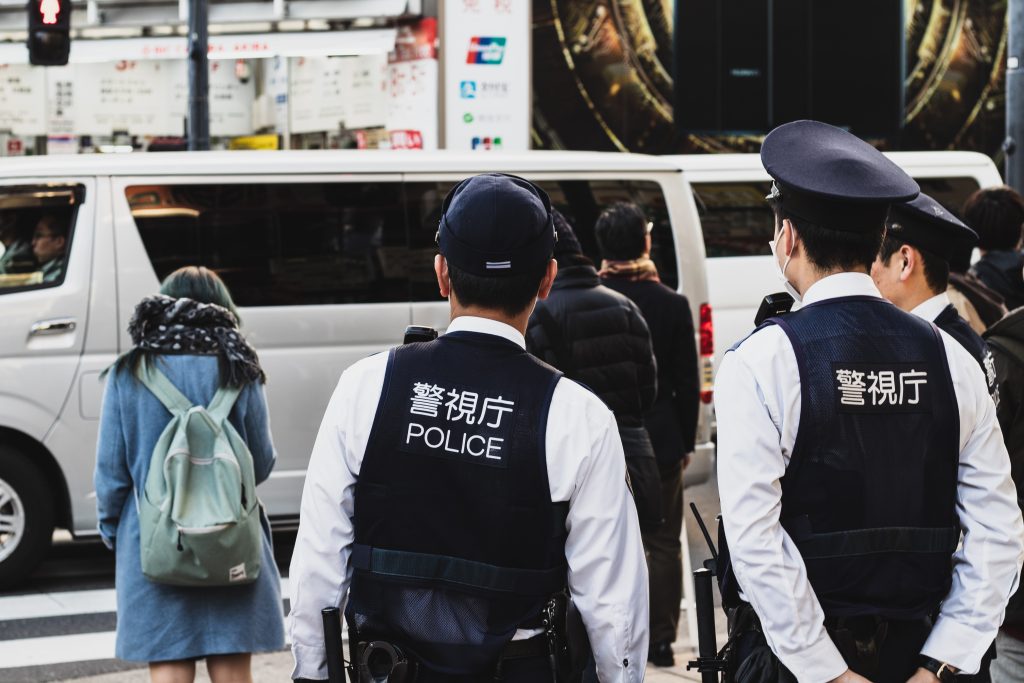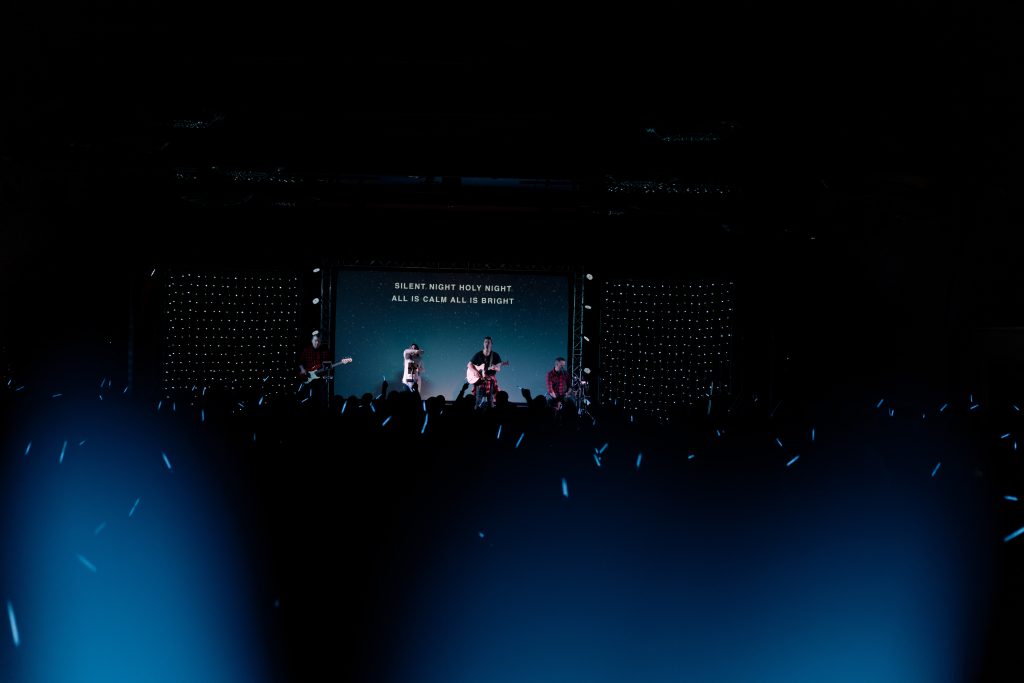Imagine this: it’s a chilly winter day in 1969, and fans of the legendary Beatles are gathered tightly on the streets of London, hoping to catch a glimpse of their favorite rock band. Suddenly, the familiar sound of guitars and drums fills the air, and everyone looks up in awe. Yes, you guessed it – the Beatles are performing a surprise concert on the rooftop of their Apple Corps headquarters. But wait, what’s this? The police have arrived, and there seems to be some commotion. Did the police shut down the Beatles rooftop concert? Let’s uncover the truth and unravel the events that took place on that fateful day. Disclosure: As an Amazon Associate, I earn from qualifying purchases.
Background of the Beatles Rooftop Concert
Early Beginnings of the Beatles
The Beatles, consisting of John Lennon, Paul McCartney, George Harrison, and Ringo Starr, started their journey in Liverpool, England, in the late 1950s. They quickly gained popularity and became one of the most influential bands in history. Their unique sound and innovative songwriting captivated audiences worldwide.
Recording at Abbey Road Studios
One of the most significant aspects of the Beatles’ career was their time spent at Abbey Road Studios in London. They recorded many of their iconic albums, including “Sgt. Pepper’s Lonely Hearts Club Band” and “The White Album,” in this legendary studio. The innovative techniques they employed transformed the music industry and influenced generations of musicians.
Creative Stagnation and Desire for Change
By the late 1960s, the Beatles had become weary of the traditional studio environment and yearned for a change. They were searching for a fresh approach to their music, something that would reinvigorate their creativity and connect them directly with their audience. This desire for change ultimately led to the idea of a rooftop concert.
The Idea of a Rooftop Concert
The Beatles’ Intention
The Beatles envisioned the rooftop concert as a way to break free from the confines of the recording studio and perform in a more intimate and spontaneous setting. They wanted to capture the raw energy and excitement of their music and share it with the world.
Selecting the Venue
After considering several options, including performing at a park or in a theater, the Beatles decided to hold their rooftop concert on the roof of their own Apple Corps headquarters at 3 Savile Row in London. The location offered both convenience and a unique backdrop for their performance.
Rehearsing the Setlist
Prior to the concert, the Beatles spent several weeks rehearsing their setlist. They carefully curated a selection of songs that showcased their diverse musical styles and appealed to both longtime fans and newcomers. The setlist included classics such as “Get Back,” “Don’t Let Me Down,” and “I’ve Got a Feeling.”

The Rooftop Concert Date
January 30, 1969
On January 30, 1969, in the midst of a cold and wintry day, the Beatles took to the rooftop of Apple Corps and prepared to perform their historic rooftop concert. Despite the adverse weather conditions, the band was determined to give their all and create an unforgettable musical experience.
Preparing for the Concert
Technical Challenges
Organizing a concert on a rooftop brought its own set of technical challenges. The Beatles had to ensure that the sound could reach the listeners on the streets below without any technical glitches or limitations. Sound engineers worked tirelessly to set up a sound system that would effectively transmit the music to the crowds.
Security Measures
With the increasing popularity of the Beatles, the rooftop concert posed a security challenge. The band and their management took great care to implement necessary security measures to ensure the safety of both the band and the audience. Extra personnel were hired, barriers were erected, and precautions were taken to prevent any potential chaos.
Promotion and Publicity
Word of the rooftop concert quickly spread, creating a buzz of excitement among Beatles fans and the general public. The band’s management team orchestrated a strategic publicity campaign, generating media coverage and drumming up anticipation for the event. This ensured that the rooftop concert received widespread attention and drew in a substantial audience.

The Rooftop Concert Begins
The Beatles Take the Stage
As the rooftop concert began, the Beatles appeared on the rooftop, their presence met with cheers and applause from the gathered crowd below. Dressed in their characteristic attire, the band members exuded energy and enthusiasm as they launched into their first song.
An Unprecedented Event
The rooftop concert was a truly unique and unprecedented event. Never before had a band of the Beatles’ stature taken to a rooftop to perform live. The sight of four iconic musicians giving their all in the open air captivated both those on the streets and those watching from nearby buildings. The atmosphere was electric, and the energy of the performance reverberated throughout the area.
Public Reaction and Engagement
Crowds Gather on the Streets
News of the rooftop concert spread quickly, attracting a massive crowd of onlookers who lined the streets surrounding Apple Corps. People paused in their daily activities to catch a glimpse of their favorite band performing live. The streets were filled with fans, many singing along and dancing to the music.
Mixed Responses from Onlookers
While the majority of onlookers were thrilled by the impromptu concert, there were some who were less impressed. As with any significant public gathering, there were individuals who found the noise and commotion disruptive. However, the overwhelming response was one of joy and excitement, as people reveled in the unique experience and the opportunity to witness musical history being made.

Police Involvement and Attempted Shutdown
Noise Complaints
As the rooftop concert gained momentum, the sheer volume of the music became a concern for some local residents and business owners. Noise complaints were filed, and the police were alerted to the situation. The growing number of complaints prompted them to consider intervening and shutting down the concert.
Intervention by Authorities
With mounting pressure, the police made their way to the rooftop, making it clear that they intended to stop the concert. The authorities were concerned about public safety, potential disturbances, and the disruption caused by the large gathering. Tensions ran high as the police and the Beatles engaged in discussions about the future of the concert.
Negotiations and Discussions
In an attempt to salvage the concert, negotiations took place between the Beatles’ management, the police, and local government officials. The band argued that shutting down the concert would disappoint thousands of fans and compromise the spirit of the event. Both sides made their cases, resulting in intense discussions that would determine the fate of the rooftop concert.
Did the Police Shut Down the Concert?
Interruption of the Performance
Despite the ongoing negotiations, the concert was temporarily interrupted. The Beatles temporarily ceased playing, and tensions rose as they engaged in further discussions with the authorities. Fans watched in anticipation, unsure if they would be able to witness the conclusion of the historic event.
Arguments and Discussions
Emotions ran high as the Beatles and the authorities debated the pros and cons of continuing the concert. The band members passionately argued that the concert represented a significant moment in music history and that it would be a disservice to abruptly halt the performance. The police held their ground, citing concerns over safety and disturbance.
The Final Decision
In the end, a compromise was reached. The concert was allowed to continue, but with certain conditions and restrictions. The Beatles agreed to lower the volume of the music, and the police assured the band that they would monitor the situation closely for any further disruptions. Amid this compromise, the concert resumed, much to the delight of the fans.

Aftermath and Legacy
Impact on Music History
The rooftop concert has since become legendary, symbolizing the Beatles’ desire for creativity, spontaneity, and their willingness to break free from conventional norms. It marked a significant turning point in music history, as the band’s decision to perform live in an unconventional setting paved the way for future artists to explore alternative performance spaces.
The Rooftop Concert as a Symbol
The Beatles’ rooftop concert has come to symbolize the band’s spirit of innovation and refusal to conform. It represents their willingness to challenge the status quo and connect with their audience on a more personal level. The image of the band united on a rooftop, playing their hearts out, has become an iconic symbol of musical rebellion and freedom.
Last Public Performance of the Beatles
The rooftop concert also holds the distinction of being the last public performance of the Beatles as a band. It marked the end of an era and left an indelible mark on the music world. The concert served as a poignant farewell, a final testament to the Beatles’ place in music history and their enduring impact on generations to come.
Conclusion
The Beatles’ rooftop concert remains a landmark event in music history. It epitomizes the band’s spirit of innovation, their desire to connect with their audience in new and exciting ways, and their refusal to be bound by convention. This impromptu performance on a London rooftop captured the hearts of fans around the world and cemented the Beatles’ place as pioneers in the music industry. The legacy of this iconic moment continues to inspire artists to push boundaries and embrace new possibilities in their own musical journeys.
Disclosure: As an Amazon Associate, I earn from qualifying purchases.

